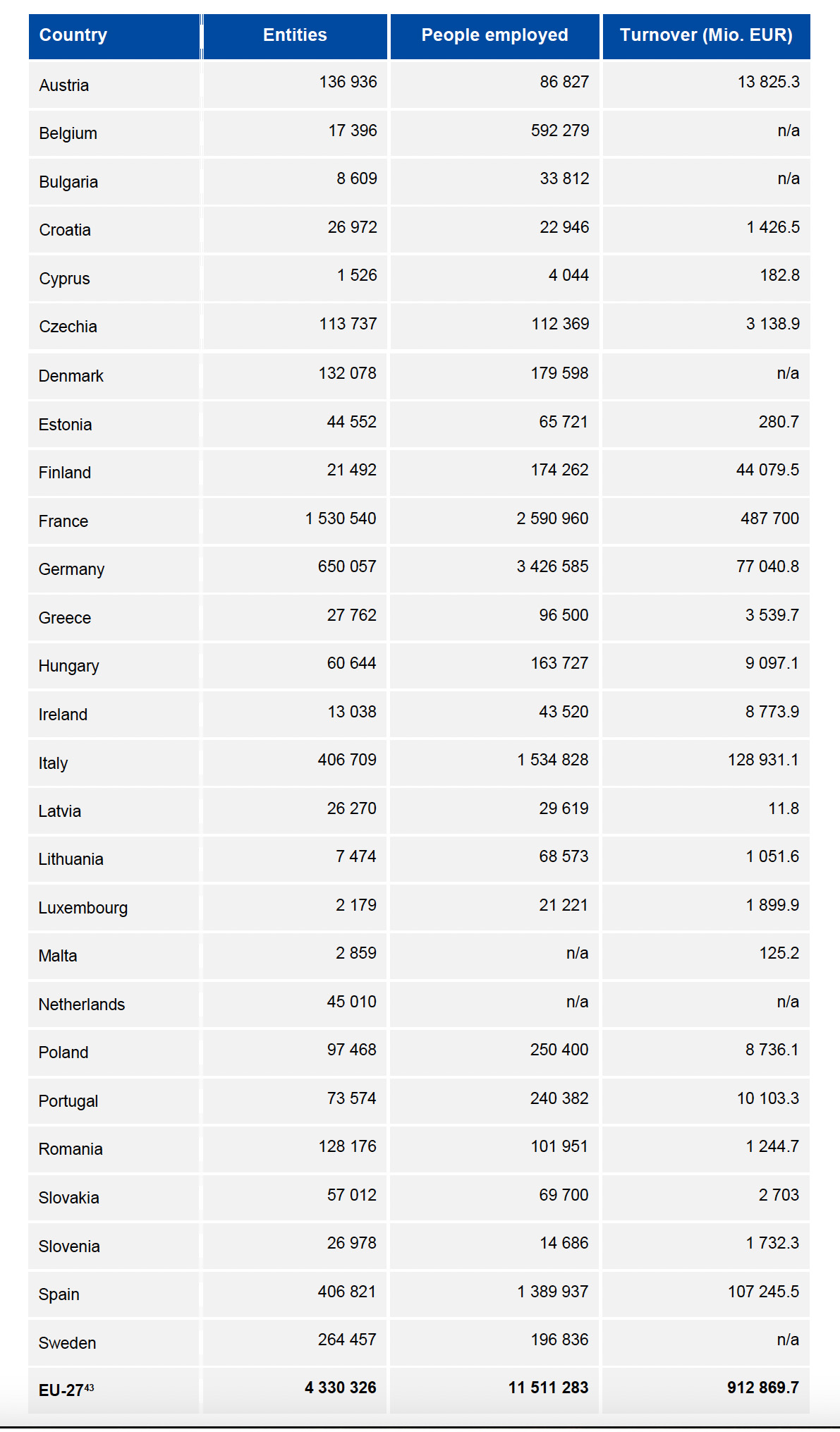By Rafael Chaves-Avila, professor at the University of València and president of the Scientific Committee of CIRIEC-Spain.
Statistics are a fundamental pillar for the development of countries. Firstly, because they make visible realities and problems that had remained unnoticed or silenced until then, and secondly, because they help to understand the socio-economic reality in a precise way and to guide and evaluate more appropriate public policies, as they are based on the evidence of objective and measurable data.
This situation has been the case for the European social economy to date. Despite its importance, one of the biggest challenges has been the lack of reliable, up-to-date and comparable statistical data, which has made it difficult to dimension this sector and to accurately assess its social and economic impact.
In response to this need and in the framework of the European Action Plan for the Social Economy launched in December 2021 by the European Commission, the latter launched a study coordinated by EURICSE, CIRIEC and Spatialforesight, whose main objective is to provide quantitative and qualitative information on the social economy in the 27 EU Member States. The project has been operationalised through the European Innovation Council and SMEs Executive Agency (EISMEA).
The study focuses on providing a comprehensive overview of the entities, employees, economic value and sectors of activity of the social economy in Europe.
Methodology used
The project has been structured through a core team led by EURICSE and CIRIEC, who have managed the project, together with 27 national experts, one for each country.
With a common methodology of data collection, each national expert, sometimes national teams, have carried out an information gathering work for their national reality. In this information gathering process and also in addition to it, most European national statistical institutes, governmental bodies producing statistics, national ministries, sectoral platforms of the social economy, as well as international bodies and experts in statistics and socio-economic impact reports, such as the ILO and the OECD, have been contacted/involved.
The methodological strategy has followed several lines of action. With regard to the delimitation of the field of statistical observation, the definition of the European Commission has been systematically used for both the social economy and social enterprises, a definition set out in the Action Plan for the European Social Economy. This definition includes all cooperatives, associations, mutual societies and foundations as part of the social economy. It also includes social enterprises in the definition established in the Community regulation.
Main statistical results obtained
Number of social economy organisations
According to the report, in terms of number of institutions, there are more than 4.3 million active institutions in the Member States, 97.5% of which use the four traditional legal forms, i.e. cooperatives, mutual societies, associations and foundations (CMAFs).
Within the category of social enterprises, more than 246,000 entities were identified, of which about 43,000 are ‘ex legge’ social enterprises and more than 203,000 are de facto social enterprises. 89.2% of social enterprises use the four traditional legal forms of the social economy.
People involved in the European social economy
More than 11.5 million people are employed in the social economy in the 27 EU member states, which is equivalent to 6.3% of the total employed population in the EU. It also mobilises more than 55 million volunteers in the 15 member countries for which data is available. In addition, it involves more than 95 million members of cooperatives and 135 million members of associations. 45% of Europe’s adult population is involved in citizens’ organisations.
Economic weight, sectoral distribution and size of social economy organisations
In terms of economic dimension, the study reports that the turnover generated by the social economy exceeded 912.9 billion euros in 2021. Cooperatives contribute to 71.5% of this volume. However, the report also points to a significant lack of data on the value added generated by these entities, with information available for only 11 Member States.
Looking at the distribution of social economy entities by sector of economic activity, associations operate mostly in sectors such as ‘Other sectors’, which include generic associative activities, the education sector, as well as cultural, creative and entertainment industries, while cooperatives operate in a diversified way, although predominantly in the agri-food, construction and housing sectors, as well as ‘other sectors’.
Conclusions and recommendations
This study, by providing accurate and up-to-date data, marks an important step towards a deeper understanding of the size and scope of the socio-economic impact of the social economy in Europe.
The report also reveals the need to improve the definition and delimitation of the field of social economy and social enterprises, addressing the ambiguity between the entities that may or may not be considered as part of the social economy field. Therefore, mechanisms have been suggested to resolve these limitations, such as the creation of working groups with national experts to collect data and design better indicators.
It has highlighted the state of development of statistics on the social economy in each member country. It has revealed significant disparities between countries, which limits the scope of the overall data and comparability, but also points to areas for improvement. The study has highlighted three countries as ‘good practices’ in the development of statistics on the social economy: Portugal, France and Poland.
The report ends with conclusions and recommendations for different types of actors, including the European Commission itself, Eurostat and national governments. Among the proposals, it highlights the creation of a mixed international working group, including national statistical institutes, academic experts and umbrella organisations of the sector. This group would contribute to standardising the scope of the social economy to be considered, the variables, the data collection mechanisms, developing a harmonised statistical framework that would allow comparability at European level. Another recommendation is to update the European System of National and Regional Accounts (ESA 2010) manual to include social economy entities that are not included in it. And a third recommendation is to carry out a special Eurobarometer on the social economy to collect information on how EU citizens participate (differentiating between members and volunteers), what they know about the social economy and how they perceive the contribution of the social economy to society.
Table: The Social Economy in Member States of the UE








